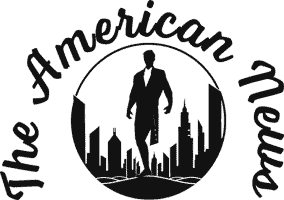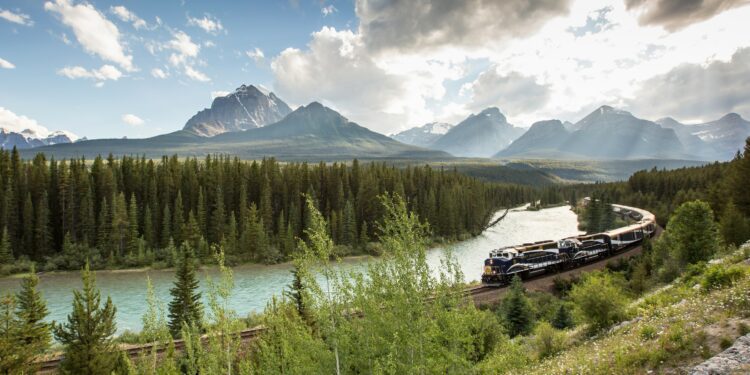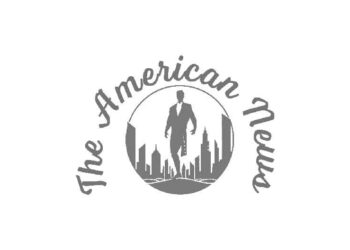What does a great train journey require? A great journey, of course. Ideally an outstanding destination. An exceptional point of departure is less pressing, but if there is one, well, so much the better.
The Rocky Mountaineer certainly has the journey – two days through the Canadian Rockies, with some of the world’s most majestic scenery. It’s hard to imagine many voyages improving on the constantly unfolding panorama of eagles and ospreys, lakes and forests, elk and bears, crashing rivers and snow-covered peaks.
And when you’re done with the journey, there’s the destination – Vancouver – one of the world’s most beautiful cities; a perfect medley of mountain, ocean and glittering skyline, and enough to see and do to keep you happy for several days or more.
The Rocky Mountaineer in the Canadian Rockies
Rocky Mountaineer
And the departure point? Banff is a delightful base, worth several days pre-train to explore more of the Rockies, not least absolute highlights such as Lake Louise, Moraine Lake, the Icefields Parkway and Jasper and Kootenay National Parks – places you won’t see on the Rocky Mountaineer.
For railway buffs, this is also a journey steeped in history, routed along part of the Canadian Pacific Railway (CPR), an extraordinary feat of trans-continental engineering built to fulfil a demand from British Columbia in 1871 for a link to the east as a condition of joining the new Canadian Confederation.
Finally, this route – the First Passage to the West – has the beauty of being easy to incorporate into a longer itinerary. It runs in both directions, to and from Vancouver, but our suggestion is to fly into Calgary, out of Vancouver, and explore Vancouver Island and more of British Columbia and the Rockies in between. You won’t be disappointed.
Here’s our guide to planning your ticket on one of the world’s greatest railway journeys.
The route
The train
How to do it
Insider tips

Banff is the departure point for the Rocky Mountaineer
Getty Images
The route
Day one
Banff’s charming station sets the tone: fringed with pines and framed by mountains, a foretaste of the magnificent scenery to come. Once this was simply “Siding 29” until Lord Strathcona, the CPR president, named it Banff in 1880 in honour of his Scottish birthplace of Banffshire.
Within minutes of departure, you’re straight into some of the Rockies’ finest landscapes, curving along the crashing, fast-flowing Bow river, weaving in and out of forests, and gazing skywards at a succession of high, often snow-capped peaks. It’s like this for five glorious hours, with today’s best scenery front-loaded, the panoramas slackening slightly at Revelstoke just after lunch. It’s a long day – you’ll welcome the change.
But not yet. Up next is Lake Louise, the station – and the railway – both settings for some of the snowier scenes in Dr Zhivago (1965). The actual lake, however, is four miles away. Busy as it is, be sure to have seen it, along with Moraine Lake, earlier in your trip.
Beyond Lake Louise, the line curves west, climbing through ever-grander wilderness to the Continental Divide and the route’s highest point (5,332ft). Water flows to the Pacific one way, east to the Atlantic the other.
Then it’s onwards and downwards into Yoho National Park. Once, the railway dropped into the Kicking Horse Valley all too steeply, trains often careering off the tracks on the so-called Big Hill. Gentler gradients were achieved in 1906 with the creation of two Spiral Tunnels, the engineering highlight of a railway that itself was a marvel of its age.
Beyond Field, the mountains, forests, lakes and waterfalls roll by unabated, broken only by the added drama of the rocky narrows of the Kicking Horse Canyon. Then comes a stretch of scenic calm as you drop to the flats of the Rocky Mountain Trench and the Columbia River valley.

A rainbow over the town of Kamloops
Getty Images
Then it’s up again, into Glacier National Park, part of the Columbia Mountains, where the peaks crowd in on the railway, making the landscapes arguably grander than the more celebrated Rockies to the east. Things change come Revelstoke, the peaks lower, more rounded, with a long, forested and more pastoral stretch bringing you to Shuswap Lake, named after the Shuswap, the region’s indigenous inhabitants for some 10,000 years before the coming of the railway.
As the day comes to a close, long lake views and gentler countryside usher you into the drier, lower environs of Kamloops, the town’s size a jolt after the preceding wilderness. Coaches take you to your hotel ready for rest, reacquaintance with your luggage and the promise of more peerless scenery tomorrow.

The Rocky Mountaineer has domed windows for observing the scenery
Rocky Mountaineer
Day two
Expect different scenery out of Kamloops compared with yesterday; no high peaks but arid, semi-desert dotted with rocky bluffs and brooding volcanic landscapes. To begin with, broad Kamloops Lake brings watery respite – this is osprey and bald eagle country – and within the hour the train is shadowing the Thompson river towards Ashcroft, one of Canada’s driest towns.
Here, the Thompson and the train bear south to meet the Fraser, one of Canada’s great rivers, named after the 19th-century explorer Simon Fraser. Three hours after leaving Kamloops you’re in a more familiar landscape of peaks and forest as the railway – and the river – cut through the Coast and Cascade mountains by way of the Fraser Canyon, 170 miles (270km) long and one of the journey’s highlights.
Constructing this section of line was as challenging, if not more so, than forging a route over the Rockies. Prior to the railway’s arrival, much of the river was considered impassable, hemmed in by cliffs and wild country, and too violent and fast-flowing to navigate by boat or canoe. Hell’s Gate marks the canyon’s most impressive point, the Fraser’s mighty flow squeezed into a narrow channel of crashing white water some 200ft (61m) deep.
A few miles south, Yale closes the teeth of the canyon, a town that during the 1858 Gold Rush on the Fraser was North America’s largest settlement west of Chicago – population 20,000 (it’s now around 250).

Some of the most dramatic stretches of the route follow alpine rivers
Rocky Mountaineer
Minutes later, the train passes mountain-ringed Hope, and the last gasp for the truly spectacular scenery on the journey. Henceforth the Fraser and the railway meander through dulcet meadows and fertile farming country. In late afternoon the route curves across the Fraser for the last time, moving slowly through the Vancouver suburbs to journey’s end, a mile or so from the city’s shimmering downtown skyline and the mountain and ocean views. At the station, the views are still unseen, among the many pleasures to discover in the days to come.

Regionally inspired meals are served in the train’s dining car or at your seat
Rocky Mountaineer
The train
Dates and times
The Rocky Mountaineer runs on the Banff-Vancouver route between mid-April and mid-October. It departs Wednesday and Sunday from mid-April to the end of April and two weeks in October; and Wednesday, Thursday and Sunday between May and September. Days may change from year to year, but rarely the weekly or monthly frequency. Services run Vancouver-Banff on Monday and Friday, from mid-April until mid-October; and Monday, Tuesday and Friday from May to September.
Trains depart Banff at 8am and arrive at Kamloops between 7.15 and 8.30pm. You can also board (or disembark) at Lake Louise (see above) 75 minutes into the journey. Departure next day from Kamloops is 8am, with arrival in Vancouver between 6.15 and 7.30pm (local time). Kamloops and Banff (Mountain Time) are one hour ahead of Vancouver (Pacific Time).

Two meals are served onboard each day
Rocky Mountaineer
Ticket types
The Rocky Mountaineer offers two classes: GoldLeaf and SilverLeaf. The former commands roughly a £500 premium year-round on the two-day Banff–Vancouver route.
GoldLeaf travellers ride in double-decker dome carriages, with almost complete wraparound windows on the upper floor. The pre-assigned seats recline, have a drop-down table, and offer ample legroom. Open-air viewing platforms are available at the end of each carriage.
Up to four “hosts” per carriage combine serving drinks and other duties with commentaries on what you’re seeing en route. Meals (two cooked breakfasts and two lunches) are taken around midday, usually over two sittings, in the dedicated dining area on the carriage’s lower floor. High quality à la carte meals, with a choice of several main courses, are freshly prepared and served on china.
SilverLeaf passengers also ride in reclining, pre-assigned seats, but in single-level carriages (also with an outdoor viewing area) that, obviously, enjoy the same scenery enroute but through over-sized rather than wraparound windows.
Regionally inspired meals, with a simpler, more restricted menu, are served at your seat. Up to three hosts provide similar service levels and commentaries en route. Rocky Mountaineer defines SilverLeaf as “excellent” and GoldLeaf as “extraordinary”. If you can afford it, GoldLeaf’s superior, elevated viewing experience – a bigger panorama, views above the trees – and gourmet dining make the outlay worthwhile.

An autumn voyage on the Rocky Mountaineer
Rocky Mountaineer
Prices
Prices in Silverleaf class start at £1,389 in April and October; £1,687 in May, June, July and October; and £1,791 in September. Prices are £1,897, £2,268 and £2,410 for the same periods in Goldleaf.
Both Gold and Silverleaf options include two days aboard the train; two lunches and two dinners; overnight accommodation in generally two- or three-star hotels in Kamloops; transfers at Kamloops; and luggage handling throughout. Early booking discounts are available for longer packages.
Dates and prices are per person for 2025.

Packages can include excursions to see the surrounding countryside around the train route
What to book
The classic
Train travel aboard the Rocky Mountaineer can be booked directly (001 800 088088 5541; rockymountaineer.com) and note the caveats if you book longer packages. Most Rocky Mountaineer journeys can also be booked in the UK through Railbookers (020 7864 4600; railbookers.co.uk).
Canada specialists such as Frontier Travel (020 8776 8709; frontier-canada.co.uk) can tailor-make Canadian itineraries to include the classic Rocky Mountaineer journeys as part of longer Canadian trips, as well as Via Rail options.

The Rocky Mountaineer along a riverbed
Alternative rail tours
Several tour operators offer tours but often not on the classic route above, or combined with Via Rail services, so check itineraries carefully. Titan (0800 988 5800; titantravel.co.uk) offers a 10-day Rocky Mountaineer Rail tour, where the train component is Jasper-Kamloops-Vancouver, missing the key Kamloops-Banff section. From £4,955, including flights, some meals, two nights in Silverleaf class, coach travel, some excursions, nine nights’ accommodation and visits to Banff, Lake Louise, Jasper, Vancouver and Victoria on Vancouver Island, departing May 2025.

The train’s approach to Vancouver and the coast is dramatic
How to do it
How to get there
Air Canada (aircanada.com) and WestJet (westjet.com) fly daily non-stop between London Heathrow and Calgary (flight time 8hr 50min). Air Canada and British Airways (ba.com) fly daily to Vancouver from Heathrow (flight time 9hr 45min). Return prices start from £450.
Vancouver and Banff offer numerous accommodation options at all prices. Book well ahead and expect steep high-season prices. In Banff, the Brewster Mountain Lodge (001 403762 2900; brewstermountainlodge.com; doubles from £142) has an easygoing air and good downtown location. In Vancouver, the Exchange (001 604563 4693; exchangehotelvan.com; doubles from £174) offers a good trade-off between price and location.
Note that Rocky Mountaineer offers free transfers to Banff and Vancouver railway stations if you are staying, or are available to be picked up from its selection of partner hotels.

Outdoor viewing cars provide fresh air and panoramas
Insider tips
Rocky Mountaineer’s busiest month is September, partly because autumn colours are beginning to emerge, and partly because sights in Banff and Vancouver are quieter outside the peak months of July and August.Many visitor attractions and services, especially in smaller centres, close or operate restricted hours before late May and after Labor Day (the first Monday in September). Demand for accommodation is extremely high in Banff and smaller centres in the Rockies. Book as far in advance as possible to secure beds between June and mid-September.Visit the Rocky Mountaineer website (rockymountaineer.com) for more helpful tips.
Source link : http://www.bing.com/news/apiclick.aspx?ref=FexRss&aid=&tid=6708dafd57d84bb8ab85b3fdf132f49e&url=https%3A%2F%2Fwww.telegraph.co.uk%2Ftravel%2Ftrips-of-a-lifetime%2Frocky-mountaineer-train-route-cost%2F&c=14741784431913569755&mkt=en-us
Author :
Publish date : 2024-10-10 20:20:00
Copyright for syndicated content belongs to the linked Source.




